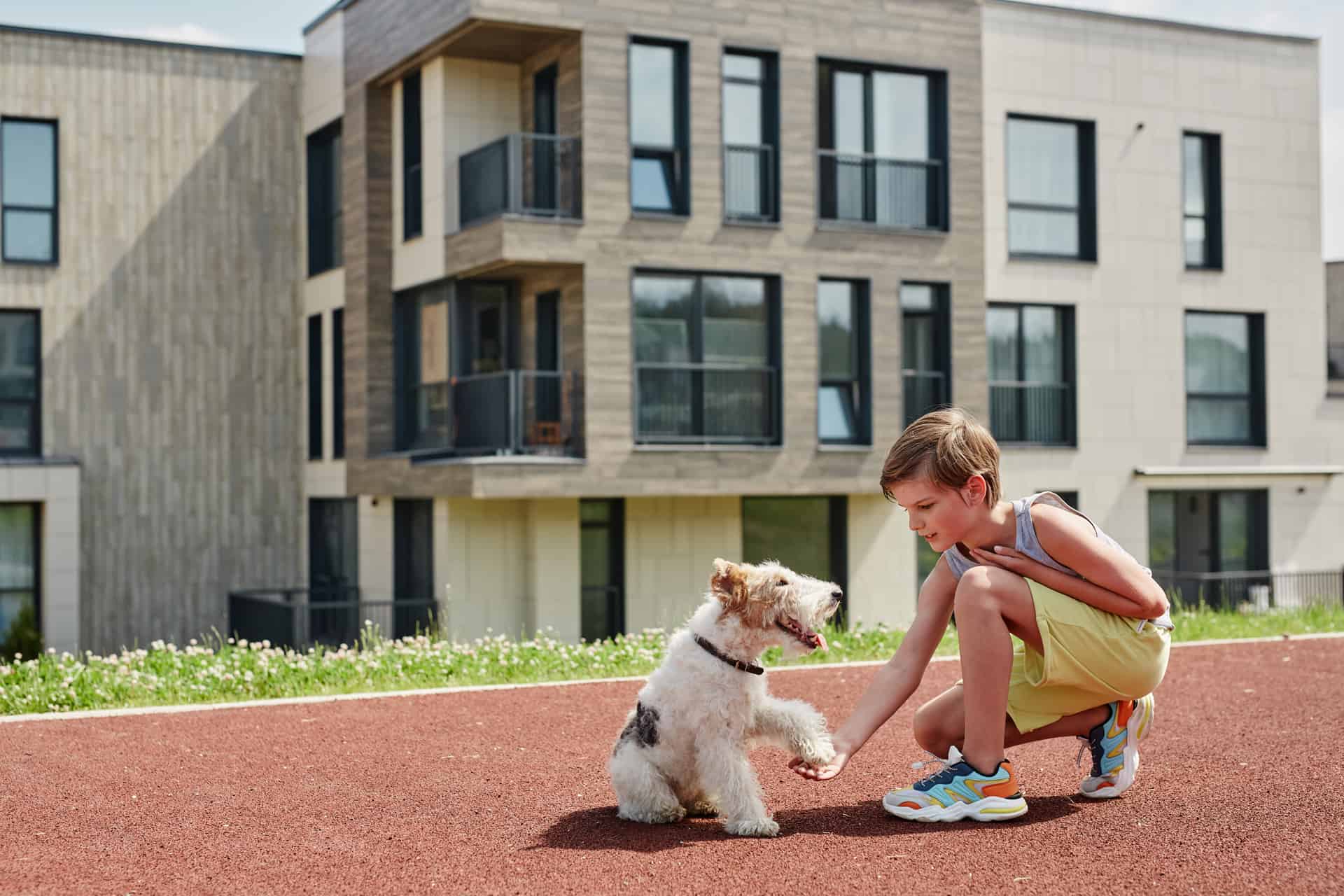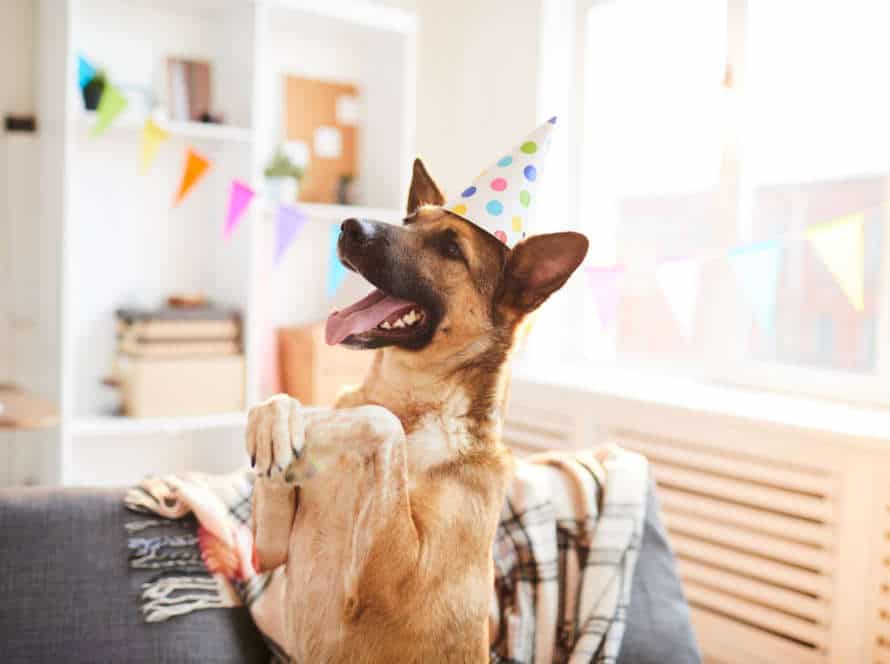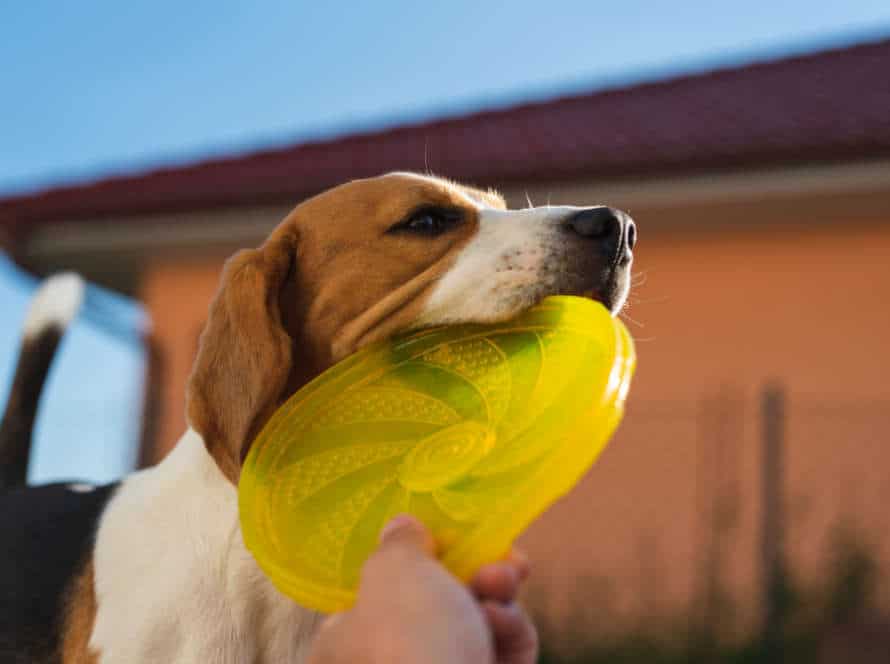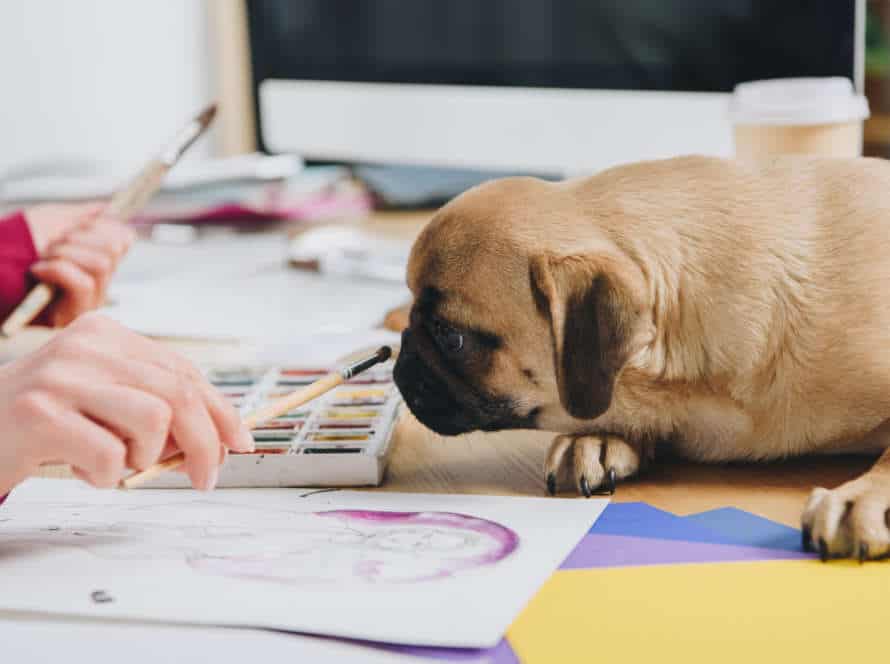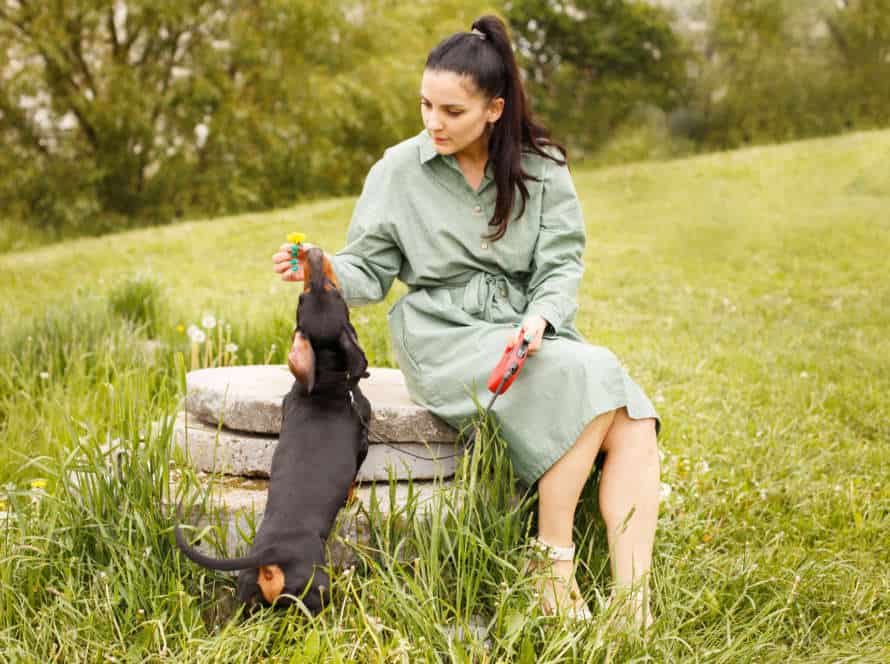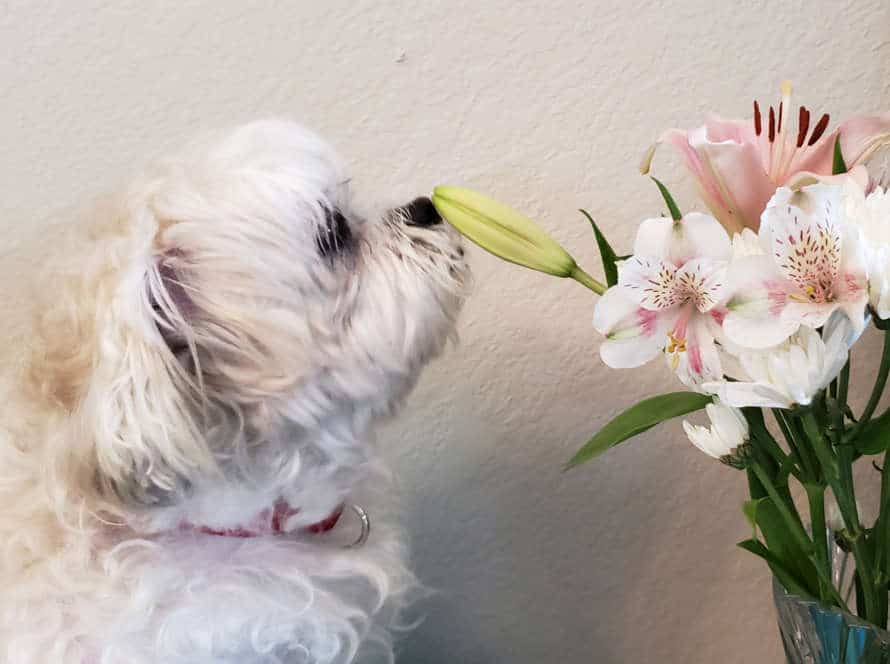Puppy Trick Training: Teaching “Stay” for Impulse Control
Training your pup the “stay” command is essential for your pooch’s impulse control. It is beneficial for when you require your doggo to stay still in one spot or soothe their nerves. To get started, these steps should help:
- Ask your pup to sit or lie down.
- Extend your hand, palm towards them.
- Say “stay” and step back.
- If they stay, take another step back and give them a treat.
- Continue these steps, increasing the distance and time each time.
When doggos have mastered this command, they are usually well-behaved. Practice “stay” with your pup to make them a great companion. Tip: Use yummy treats as a reward to keep them motivated.
Understanding the importance of impulse control in puppies
It is significant to train your puppy impulse control. This will make them better-mannered and improve your bond. Impulse control is the capacity to manage their reactions to stimuli and not act on impulse. Teaching your pup the ‘stay’ command is a brilliant way to begin developing their impulse control aptitudes. Let’s explore this point further and discuss why it is essential to teach your pup ‘stay’.
Why impulse control is an essential skill for puppies
Impulse control is a key skill for puppies to master. This helps them control their emotions and behaviour in different situations, instead of reacting instinctively.
Why is it so important?
- Safety: It stops puppies from doing dangerous stuff like jumping from high places or fighting with other animals.
- Socializing: Puppies with impulse control can interact with other dogs and people in a polite and friendly way.
- Obedience: It takes time for puppies to learn to follow orders. Impulse control helps them understand commands such as “stay,” “leave it,” and “come.”
Teaching impulse control? Start with simple exercises, like teaching “stay”. Practice often and gradually increase the level of distraction. With patience and time, puppies will be able to control their impulses and become well-behaved.
The benefits of training puppies for impulse control
Training puppies in impulse control offers a lot of advantages. Impulse control is the ability to manage one’s behavior, emotions, and impulses. Here are the benefits of training puppies in impulse control:
- Reduces bad behavior. Teaching impulse control teaches puppies to resist destructive behaviors, like chewing on furniture or digging up your yard.
- Enhances obedience. Teaching ‘stay’ helps a puppy learn to listen to and obey commands.
- Improves socialization. Puppies that have impulse control training are better behaved around other dogs. They are less likely to fight.
- Increases safety. Puppies that learn to manage their impulses are at a lower risk of running away or getting into accidents.
In conclusion, training puppies in impulse control is an important part of raising a healthy and happy pet who can adjust to any situation.
Common behaviors that indicate a lack of impulse control in puppies
Impulse control is vital in puppy training. It leads to better interactions with your pup. However, some common behaviors can show a lack of control. These include: jumping, mouthing, chewing, barking, and leash pulling.
To teach impulse control, “stay” is an effective method. Here’s how:
- Start in a quiet & distraction-free room.
- Ask pup to sit, then stay.
- Gradually increase distance & duration.
- Reward pup with treats & praise.
- Repeat in different environments & situations.
Steps for teaching “stay”
Teaching a pup to stay is essential! It helps them master impulse control and be more obedient. Here are the steps:
- Practice consistently and be patient.
- Your pup will soon understand and obey this command.
Let’s get started!
Start with teaching the “sit” command
Teach your pup “sit” first, then “stay”. Here’s how it’s done:
- Command “sit” and reward with a treat.
- Next, give “stay” command with a flat palm, whilst keeping eye contact.
- Provide a treat for following the command.
- Gradually increase time for the “stay” command, reward for improvements.
- Introduce distractions like food and toys, to test self-control.
- Always reward good behaviour and patience.
- Practicing impulse control helps pup behaviour in other contexts.
Pro tip: Use positive reinforcement to encourage desirable behaviour and reduce time needed to teach complex commands.
Train your puppy to stay in a small area before expanding
Teaching your pup the “stay” command is important. To do it right, start small. Here’s how:
- Pick a peaceful spot like home or the backyard. Put pup on a leash.
- Ask pup to sit and give the “stay” command while showing palm.
- Step back and wait a few seconds. Praise & reward pup.
- Increase distance and time pup stays before returning and giving reward.
- Expand area & add distractions when pup masters staying in small area.
- Be consistent and use positive reinforcement for successful training.
Use positive reinforcement to encourage your puppy to stay
Positive reinforcement is a great method to teach your pup to stay on command. Here are the steps, and the benefits of impulse control:
- Start with a “sit” command. Once your puppy knows it consistently, introduce “stay”.
- Use a signal or vocal cue, like “stay” or “wait”, when the pup is sitting.
- Reward your puppy with a treat or praise if it stays in its spot.
- Increase the distance and time that your puppy stays, while still rewarding good behaviour.
Doing “stay” regularly helps your pup gain impulse control and strengthens the bond between you two. Pro tip: Treats and praise can help your pup stay focused, even in distracting situations.
Gradually increase the duration of “stay” over time
Training your pup to “stay” is essential. Increase the time between the command and reward to teach them the concept. Here’s how:
- Start in a quiet, distraction-free room.
- Give them the “sit” command and reward them.
- Say “stay” with a hand in a stop sign and wait a few seconds before rewarding again.
- Gradually lengthen the time between command and reward.
- If pup breaks “stay,” return them to the position and repeat.
- Over time, work up to leaving them for several minutes.
- Use positive reinforcement, treats and praise to encourage good behavior.
- Pro tip: Practice in different environments, with increasing distractions.
Common mistakes to avoid while teaching “stay”
Teaching your pup to stay? It’s useful and easy! This trick helps them learn skills like impulse control. Avoid making mistakes, though. Here are some common ones that puppy owners make when teaching their pup to stay:
Punishing your puppy for mistakes
Punishing your puppy for mistakes is a no-no when teaching the ‘stay’ trick. Positive reinforcement is the way to go. Here are other mistakes to dodge:
- Moving too fast: Start short and work up to longer distances and times.
- No being consistent: Use the same commands and rewards each time.
- Distractions: Start in a quiet place and introduce distractions as your pup becomes more comfortable.
- Punishing: No yelling, hitting, or physical punishment. Use positive reinforcement like treats and praise.
- Overwhelming: Keep training short and frequent, preventing overwhelming and helping them retain info.
By avoiding these, you can teach the ‘stay’ command and promote impulse control in a positive and effective way.
Inconsistency in training
Inconsistency is a no-no when teaching your pup the “stay” command. Keep these tips in mind to guide you:
- Positive reinforcement: Give treats when they obey the command to link it with good experiences.
- Short distances: Start near you and increase the distance gradually.
- No repetitions: Use the command only once, not many times.
- Hand signals: Use signs alongside verbal commands.
- Practice daily: To master it, practice often.
- Consistency is key: Everyone should use the same command and technique.
- Keep it simple, fun and patient for your pup to learn!
Overwhelming your puppy with too many training sessions
Don’t overwhelm your pup with too much training – it can stop them from learning new things and make them not like training.
When teaching ‘stay’, here are some common mistakes to avoid:
- Don’t start too soon – let your pup learn basic obedience first.
- Go slowly – increase the distance and time for the ‘stay’ command gradually. If you rush, your pup will be confused.
- Give praise and treats – when your pup follows the ‘stay’ command, reward them. It will help them to obey in the future.
- Mix it up – do other tricks between ‘stay’ exercises. Mixing it up will keep it fun and stop your pup from getting bored.
Follow these tips to make ‘stay’ training a positive experience for both you and your pup.
Tips for reinforcing “stay”
Teaching “stay” is crucial in pup training. It teaches them impulse control and helps them concentrate. Plus, it keeps ’em safe around people, animals, and objects that could distract. Here’s tips to reinforce the “stay” command with your puppy:
Use treats or toys as an incentive
Teaching “stay” to your pup is essential for obedience and control. To make it fun, use treats or toys as a reward. Here are some tips:
- Begin with short distances and time intervals.
- Speak in an upbeat, encouraging tone when giving the command.
- Show a treat or toy in your hand and say “stay”.
- Step back and wait for your pup to stay.
- If they do, give the treat or toy as a reward.
- If they break the “stay”, correct them and start again.
- Practice and patience will help your pup master “stay”.
- Plus, be consistent and use positive reinforcement for a pleasant training experience.
Keep training sessions short and frequent
Train your pup to “stay”! Short, frequent sessions are the key to success. Here are some tips:
- Say “sit” first.
- “Stay” in a firm voice with a raised hand in front of their face.
- Take one step back and wait.
- Reward them if they stay.
- Make the “stay” longer and further away each time.
- Limit training to 5-10 mins. Do this a few times a day to reinforce the behavior.
Patience & consistency are vital!
Practice “stay” in different environments to improve generalization
Practicing “stay” in different settings is a great way to better generalization. Here are a few tips to help:
- Start with a quiet, distraction-free room.
- Gradually add noise and movement as your pup masters the trick.
- Practice in different rooms, like the kitchen or living room.
- Go outside too, for different environmental conditions.
- Use treats and toys to keep your pup engaged.
- Start with shorter durations and build up length.
- Keep sessions positive and short.
With patience and dedication, your pup will learn to stay in any situation, giving great impulse control.
Troubleshooting problems with “stay”
Teaching a pup “stay” is a must. It helps them to control their impulses. If they learn to stay in one place, they can wait for food, stay quiet, and even stay still while getting their nails trimmed.
But, sometimes, they won’t follow instructions! Let’s look into what may be causing it and how to fix it.
Your puppy running away before you release them
Don’t let your anger overpower you if your pup is running off before they’ve completed their ‘stay’ training. Consider these tips:
- Start with basics: Make sure pup knows ‘sit’, ‘down’ and ‘come’ first.
- Shorter lengths: Begin with shorter durations of ‘stay’. Increase as pup learns to stay.
- Minimise distractions: Puppies are easily distracted, so start in a low-distraction environment.
- Revert to basics: If pup is still having trouble, go back to basics and reinforce commands before returning to ‘stay’.
Consistency is key. Reinforce good behaviour with treats and patience. Pro Tip: Use treats, but don’t feed too much!
Your puppy not understanding “stay” in a distracting environment
Training your pup to obey the “stay” command is a must! It helps them build impulse control and tells them to stay put for an extended period. If they don’t understand the command in a distracting environment, it’s time to troubleshoot. Here are some tips to help out:
- Begin training in a quiet space with minimal distractions. Then, slowly move to noisy spaces.
- Be patient and start with short intervals. Gradually increase time.
- Use yummy treats like boiled chicken or hot dog slices to reward good behavior.
- Train in different positions, like sitting or lying down, to boost impulse control.
- End the session on a positive note, treat or toy your pup’s favorite.
Be consistent and patient and your pup will understand the “stay” command even in noisy environments!
Your puppy taking too long to understand “stay”
Teaching a puppy to “stay” may be difficult. Here’s why and some tips to make it easier:
- Your pup might not be ready. Start with simpler commands first.
- Your body language may be sending mixed signals. Be aware and use clear hand signals.
- Distractions can be a problem. Train in a quiet, distraction-free area.
- Training sessions should be short. Keep them frequent and brief.
- Use positive reinforcement to help your pup understand “stay“.
Conclusion
Break the “Stay” cue into reachable goals and reward generously. You’re now ready to train your pup this key and important command. Repetition and patience will help your pup stay in one place, even when there’s a distraction. With steady practice, this cue can be a handy tool for teaching future commands and controlling your pup’s impulses.
The importance of patience and consistency in puppy training
Patience and consistency: Necessary for puppy training. Teaching your puppy tricks like “stay” can help with impulse control and build a strong bond.
To train “stay”:
- Command pup to “sit”.
- Raise hand and give “stay” command in a firm, clear tone.
- Step back. Pause.
- If pup remains, praise and offer treat.
- Gradually increase distance & duration of “stay” command.
- Be patient and consistent in training.
- Every pup learns at its own pace. Some quicker, some slower. Patience and positive reinforcement is key to success.
Celebrating progress and successes in puppy training
It’s important to celebrate progress and successes in puppy training. To make it a positive and rewarding experience, here are some tips:
- Use treats, toys, and praise to reward good behavior.
- Training takes patience, so congratulate small victories.
- If struggling with a command, review the basics.
- Have fun during training sessions.
- Celebrate progress and continue to work on new goals.
- Pro tip: When working on ‘stay’, start with brief periods and increase them over time to build impulse control.
Encouraging good behavior through positive reinforcement techniques.
Positive reinforcement can help teach good behavior to your pet dog. One technique is “stay” training. To practice it, here are the steps:
- Put pup in sitting position.
- Hold hand in front of pup’s face and say “stay” calmly and firmly.
- Move back a little and give treat + praise for staying.
- Make “stay” longer and farther away.
- Practice in different places and conditions.
Always use positive reinforcement like treats and praise for desired behavior. With patience and consistency, pup will learn “stay” and have better impulse control.
Frequently Asked Questions
Q: What is puppy trick training?
A: Puppy trick training is a fun way to engage with your puppy and teach them new skills and behaviors using positive reinforcement. This type of training is not only beneficial for your furry friend’s mental and physical wellbeing, but it also strengthens your bond with them.
Q: Why is teaching “stay” important?
A: Teaching your puppy to “stay” is crucial for their impulse control. It helps them learn to resist running after something they shouldn’t, such as a squirrel or a ball rolling into the street. Teaching “stay” also promotes good manners and obedience, making your daily interactions with them much smoother.
Q: What are the steps to teach “stay”?
A: Begin by asking your puppy to sit, then hold your palm out in front of them while saying “stay.” Take a step back and reward them with a treat if they remain sitting. Increase the distance gradually, continuing to reward when they stay in place. Practice in different locations, with distractions, and for longer periods over time.
Q: How long does it take to teach “stay”?
A: The time it takes to teach “stay” varies depending on the dog’s breed, temperament, and previous training experience. Some puppies may pick it up quickly, while others may take several weeks. Consistency, patience, and positive reinforcement are key to successfully teaching “stay.”
Q: Can any puppy learn “stay”?
A: Yes, any puppy can learn “stay” with proper training and practice. However, it may be easier for some breeds than others. For example, breeds that are known for being independent or have a strong prey drive may require more consistent and persistent training.
Q: What should I do if my puppy doesn’t “stay”?
A: If your puppy struggles with “stay,” it may be helpful to go back to the basics and reinforce “sit” and “come” commands. You can also try shortening the distance and gradually increasing it again or using higher value treats as a reward. Seek advice from a professional dog trainer if your puppy continues to struggle.

